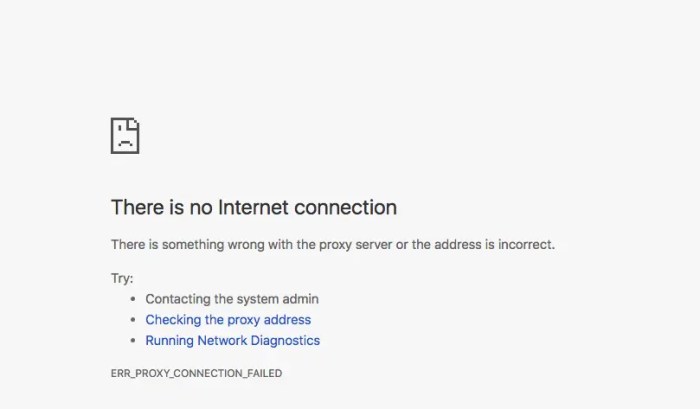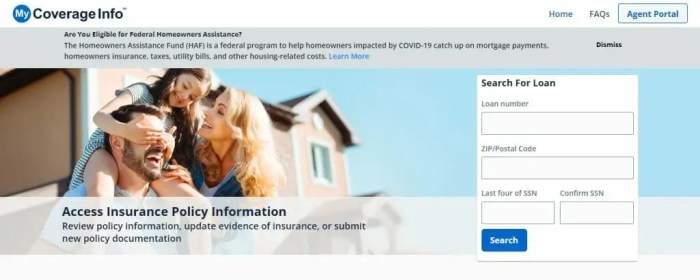Exploring the realm of Common MyCoverageInfo Agent Errors and How to Fix Them, this guide delves into the top issues faced by agents and provides practical solutions to tackle them effectively.
From error messages to troubleshooting tools, this guide equips agents with the necessary knowledge to navigate through challenges seamlessly.
Common MyCoverageInfo Agent Errors

When using MyCoverageInfo, agents may encounter various errors that can impact their workflow and user experience. Understanding the common errors and how to address them is crucial for providing efficient service to clients.
Top Three Common Errors Agents Encounter
- 1. Login Credentials Invalid
- 2. Network Connection Issue
- 3. Data Entry Errors
Login Credentials Invalid
Agents may often face the error message "Invalid username or password" when trying to access MyCoverageInfo. This error can prevent them from logging in and accessing important client information. It is a common error due to incorrect input or forgotten login details.
Network Connection Issue
Another common error agents encounter is related to network connectivity. When the network is unstable or slow, agents may receive error messages like "Unable to connect to server." This can disrupt their workflow and hinder their ability to retrieve or update client data.
Data Entry Errors
Data entry errors, such as missing or incorrect information in client profiles, can lead to issues when navigating MyCoverageInfo. Agents may encounter error messages like "Incomplete data entered" or "Invalid client information." These errors can impact the accuracy of records and cause delays in client service.
How to Fix Common MyCoverageInfo Agent Errors

When encountering common errors while using MyCoverageInfo, it's important to follow specific steps to resolve the issues efficiently. Below are step-by-step solutions for each common error:
Incorrect Login Credentials Error
If you receive an error message indicating incorrect login credentials, follow these steps to resolve the issue:
- Double-check the username and password entered for accuracy.
- If the credentials are correct, try resetting your password through the "Forgot Password" option.
- If the issue persists, contact customer support for further assistance.
Page Loading Error
If you encounter a page loading error while using MyCoverageInfo, try the following troubleshooting methods:
- Refresh the page to see if the error resolves itself.
- Clear your browser's cache and cookies to ensure a clean browsing session.
- Try accessing the platform using a different browser or device to rule out any local issues.
System Unavailable Error
When faced with a system unavailable error on MyCoverageInfo, consider the following solutions:
- Check for any scheduled maintenance or downtime notifications on the platform's official website or social media channels.
- If no maintenance is ongoing, try accessing the platform at a later time to see if the issue is resolved.
- Contact technical support if the problem persists to report the error and seek assistance.
Preventing Future Errors
To prevent encountering common errors in the future while using MyCoverageInfo, follow these best practices:
- Regularly update your login credentials and ensure they are secure.
- Keep your browser and device up to date to avoid compatibility issues.
- Stay informed about any scheduled maintenance or system updates to anticipate potential disruptions.
Real-Life Scenario
In a real-life scenario, an agent encountered an incorrect login credentials error while trying to access MyCoverageInfo. By following the steps to double-check and reset the password, the issue was quickly resolved, allowing the agent to proceed with their tasks efficiently.
Troubleshooting Tools for MyCoverageInfo Agents
When facing errors as a MyCoverageInfo agent, having the right troubleshooting tools can make all the difference in quickly identifying and resolving issues
1. Log Files
Log files are an invaluable resource for agents to track and analyze system activities. By reviewing log files, agents can pinpoint where errors occurred, identify patterns, and understand the root cause of issues.
2. Testing Environment
Setting up a testing environment allows agents to simulate user interactions and test system functionality without impacting live operations. This helps in isolating issues and experimenting with different solutions before applying them in the production environment.
3. Diagnostic Tools
Diagnostic tools provide agents with detailed insights into system performance, network connectivity, and other key metrics. By running diagnostic tests, agents can uncover hidden issues, troubleshoot network problems, and optimize system configurations for better performance.
4. Remote Desktop Access
Remote desktop access enables agents to troubleshoot client-side issues by remotely accessing and controlling user devices. This tool is especially useful for resolving user-specific errors, configuring settings, and providing real-time support without physical presence.
5. Knowledge Base and Documentation
Access to a comprehensive knowledge base and documentation library can help agents quickly find solutions to common issues, best practices, and troubleshooting guides. By referring to these resources, agents can efficiently resolve errors and enhance their troubleshooting skills.
Effective Communication Strategies when Addressing Errors
Clear communication is crucial when dealing with errors as it can help in resolving issues efficiently and maintaining a positive relationship with clients. Here are some effective communication strategies to consider:
Providing Transparent Updates
- Clearly explain the error that occurred and what steps are being taken to address it.
- Update the client regularly on the progress of resolving the issue.
- Offer an estimated timeline for when the error will be fixed.
Offering Apologies and Solutions
- Express empathy and understanding towards the inconvenience caused by the error.
- Suggest potential solutions or workarounds to mitigate the impact of the error.
- Apologize sincerely and take ownership of the mistake.
Adjusting Communication Based on Severity
- For minor errors, a brief and concise explanation may suffice.
- For major errors, provide a detailed analysis of the issue and steps being taken to rectify it.
- Use a more formal tone for severe errors to convey the seriousness of the situation.
Maintaining Professionalism and Empathy
- Remain calm and composed when communicating about errors.
- Acknowledge the impact of the error on the client and show genuine concern.
- Avoid placing blame and focus on finding a resolution collaboratively.
Wrap-Up
In conclusion, understanding and addressing Common MyCoverageInfo Agent Errors is crucial for a smooth user experience. By implementing the right strategies and solutions, agents can ensure seamless operations and customer satisfaction.
FAQs
What are the top three common errors agents encounter?
1. Connectivity issues with the server. 2. Incorrect data input. 3.
System compatibility problems.
How can these errors impact the user experience?
These errors can lead to delays in processing requests, inaccurate information, and potential security risks.
What are the best practices for preventing these errors in the future?
Regular system updates, data validation checks, and user training can help prevent these errors from occurring.


